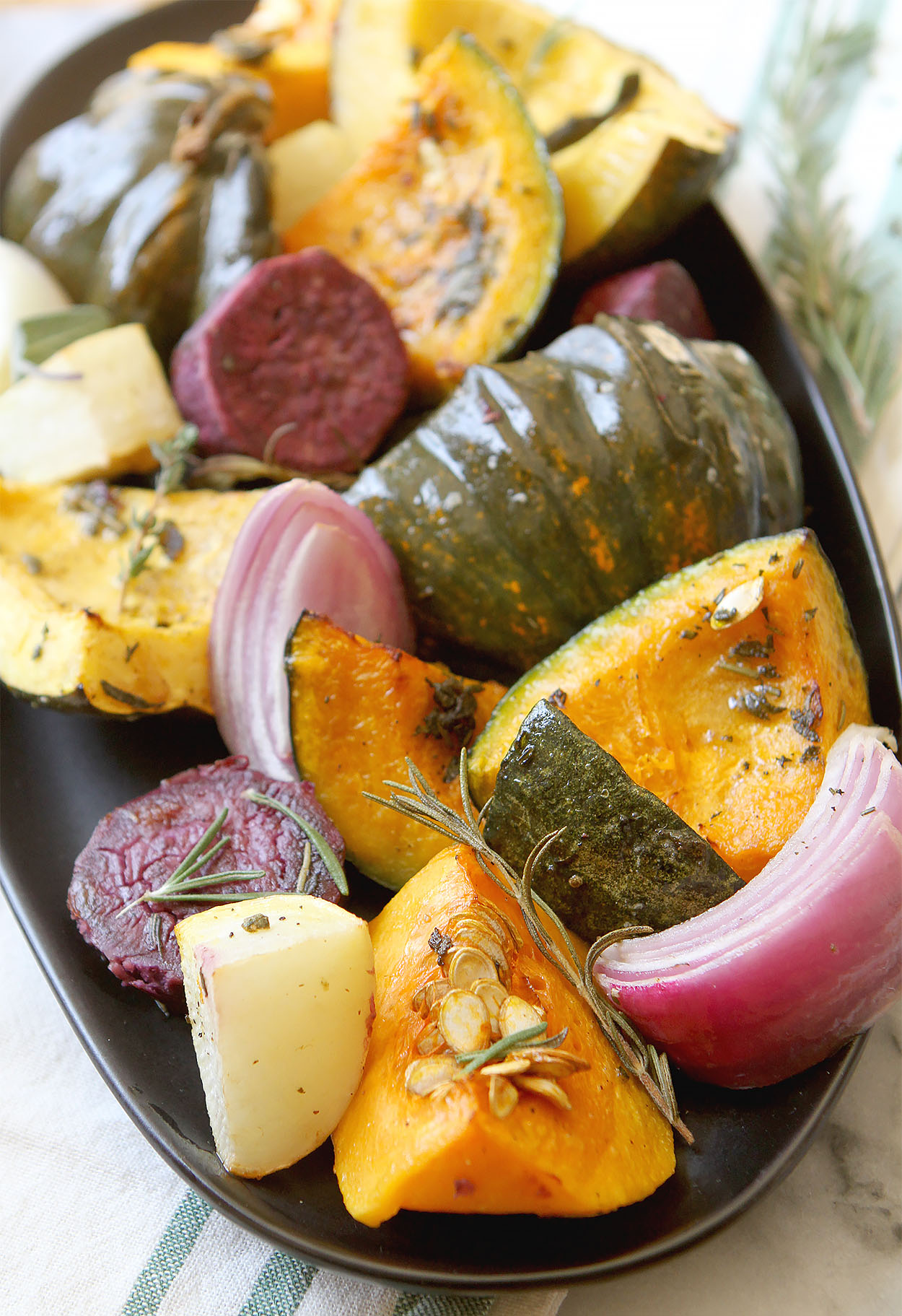
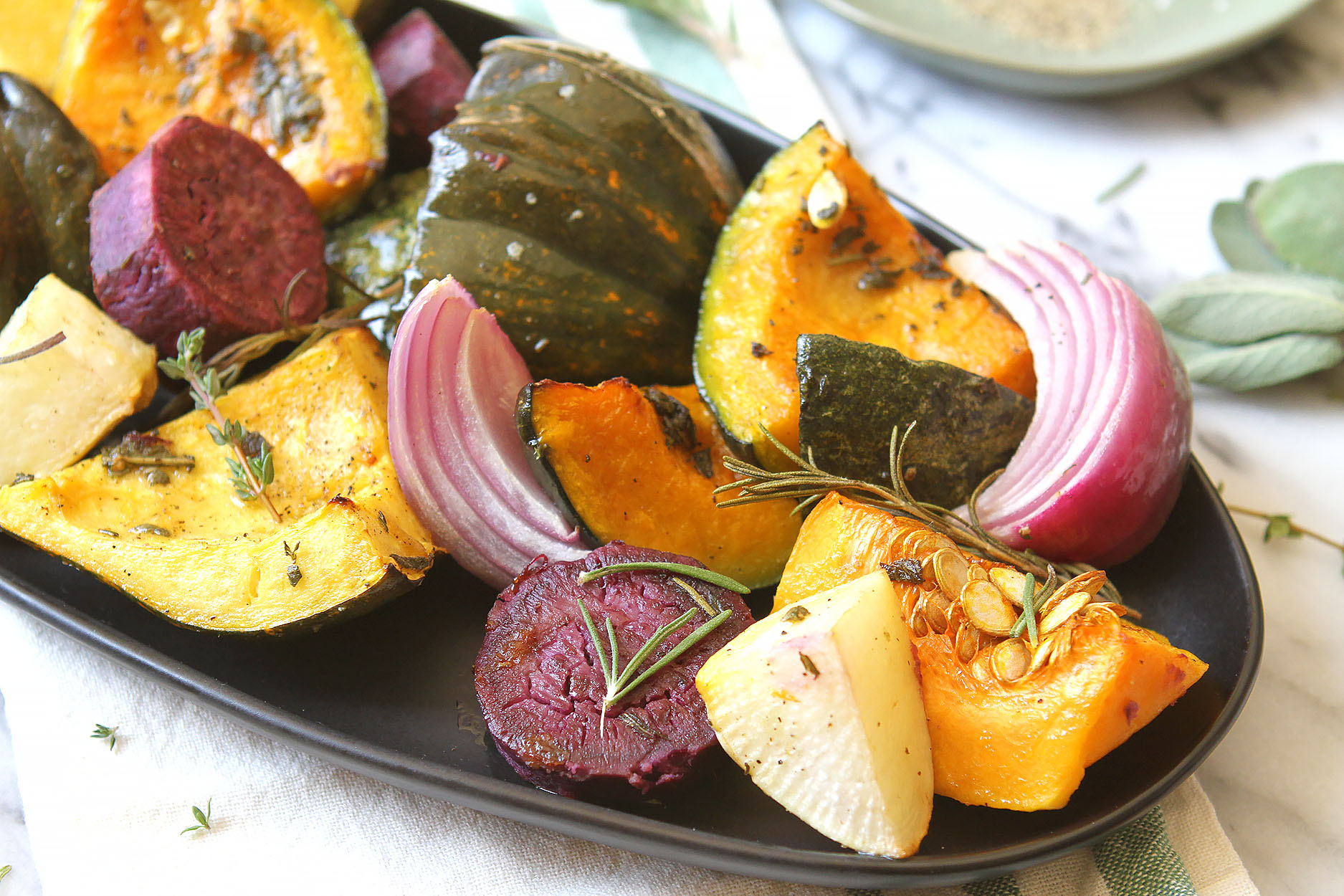
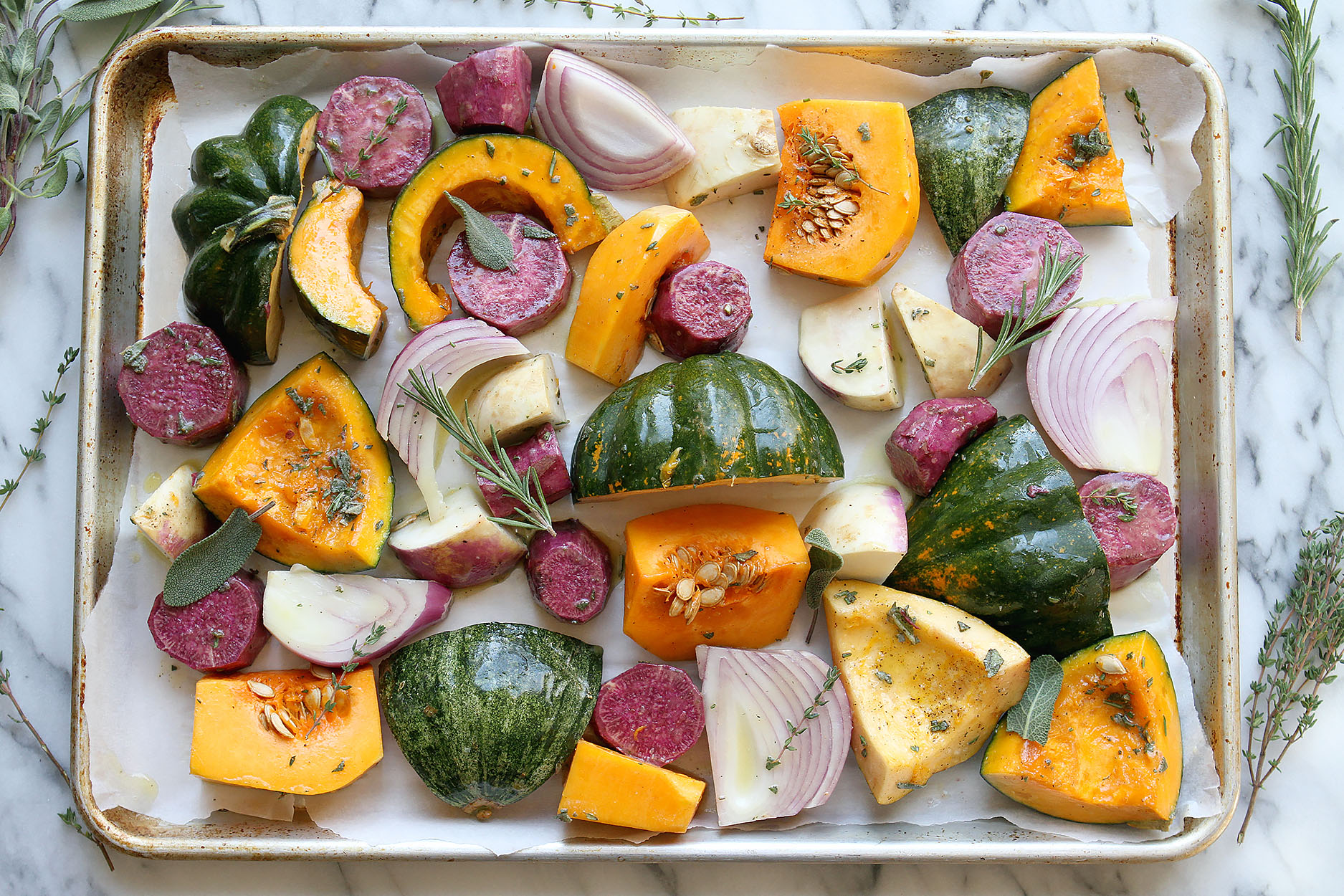
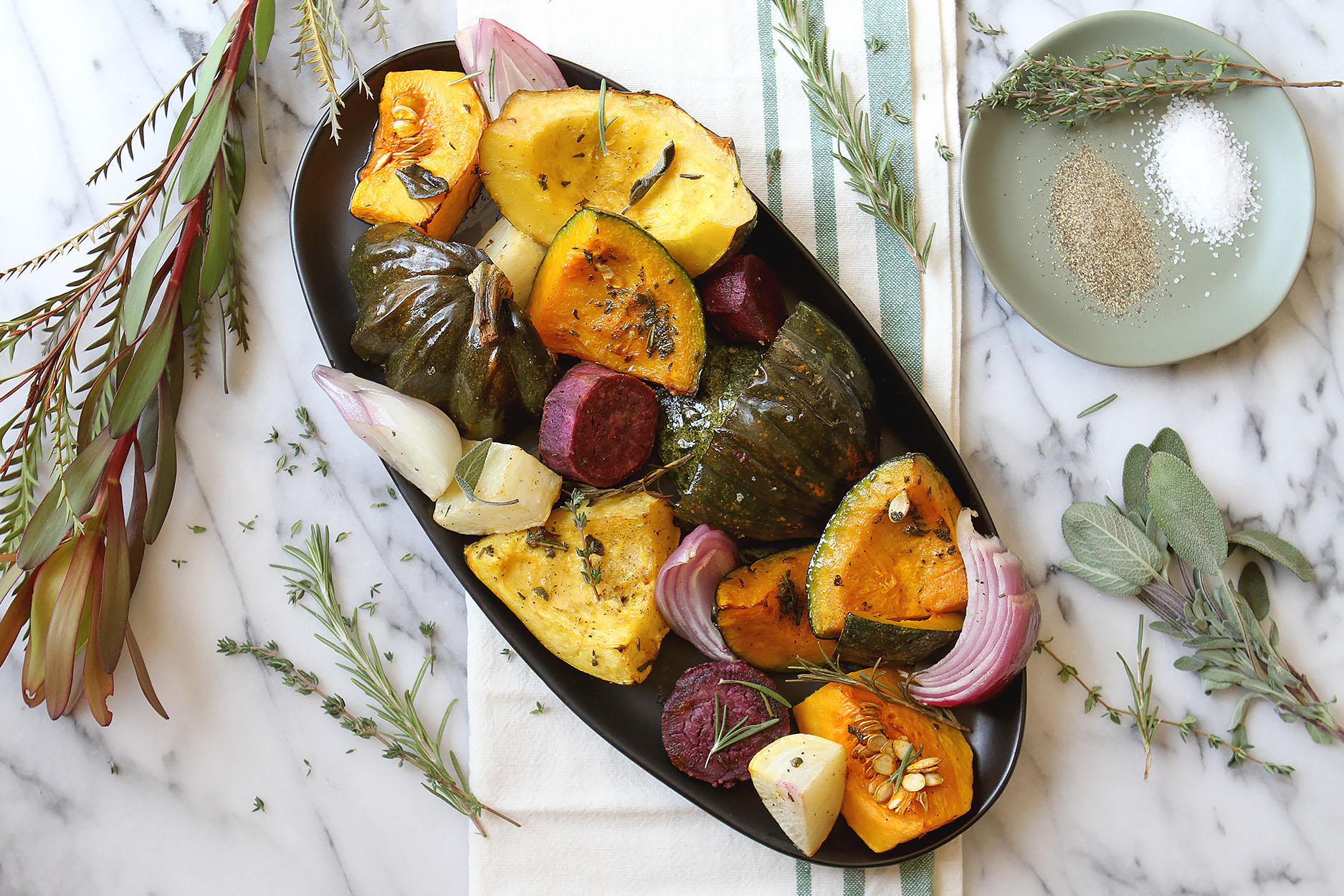
Don’t ask me why I choose different cooking techniques; most likely it depends on if I have the patience to heat up the oven super high or if I’m cooking other items in the oven alongside the veggies. They always come out good, but sometimes, I’ll be honest, it’s hit or miss if they turn out “great.” At times they get too mushy or get kinda dried out and shrively. Of course I still eat them, but I wanted to try and fine tune my technique for Thanksgiving, because no one wants to eat shriveled up turnips on Thanksgiving. So I did some research and discovered the best way to cook them is super high heat for a short time, so the veggies don’t lose all their moisture and shrivel up. This technique worked beautifully and resulted in perfect, beautiful looking veggies. The recipe I’m sharing today has a slightly different twist in that I used a combo of salted butter and olive oil to toss the veggies in, wanting a bit of a richer, more flavorful outcome.
Please note that if you are adding in a softer vegetable like an onion, you will most likely have to take them out early, before the rest of the veggies are done cooking, or else they will get really overcooked. Actually, if you like super soft onions, ignore this advice, but if you like your roasted onions to still have some crunch, take them out after about 15 minutes. 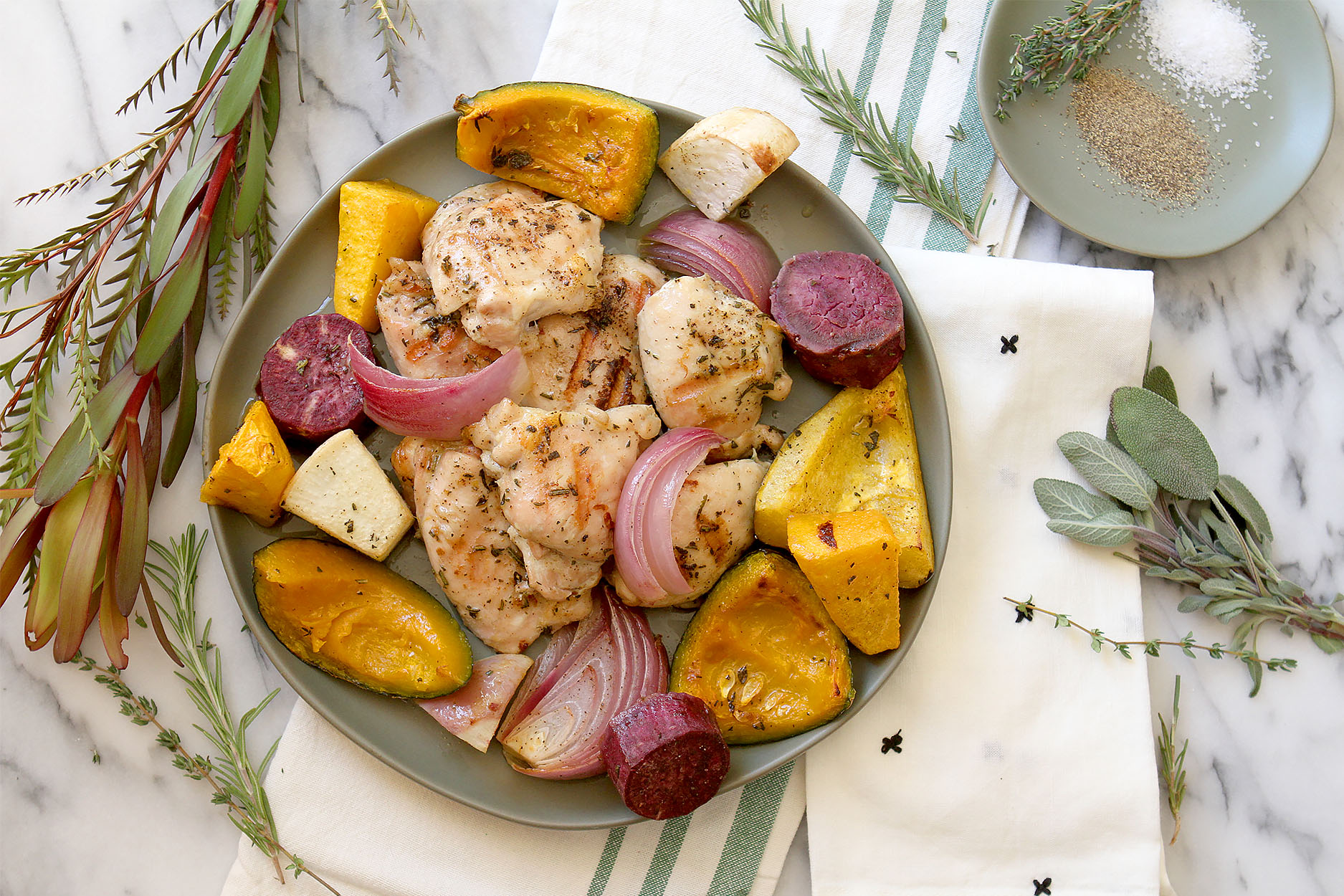
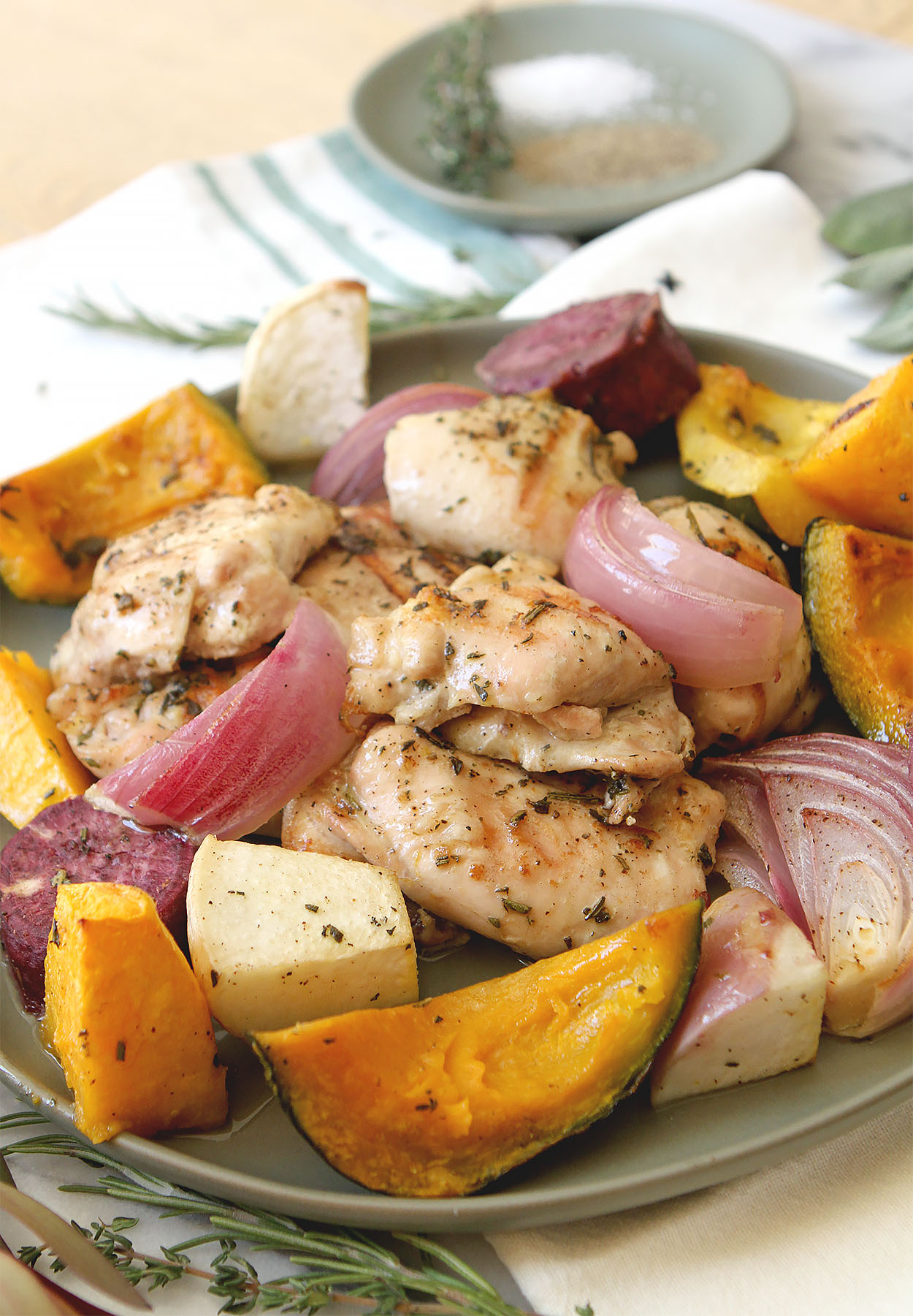
Find the recipe for these top notch root veggies, squash and chicken thighs below. Enjoy and please let me know if you have any questions.
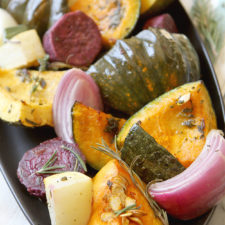
Herb Buttered Roasted Root Vegetables & Chicken Thighs
Ingredients
- A variety of winter squashes & root veggies such as
- 2 small purple sweet potatoes
- 1 small acorn squash
- 1 small butternut squash
- 1 medium red onion
- 1 small turnip
- 1 small kabocha squash
- 2-3 tablespoon fresh chopped herbs combo such as thyme rosemary & sage
- ½ cup melted butter
- ¼ cup olive oil
- salt & pepper to taste
- 4-6 small boneless skinless chicken thighs
Instructions
- Preheat the oven to 500 degrees
- Cut up and cube squash and root vegetables into similar sizes and place in a large bowl
- Combine melted butter, olive oil and chopped herbs, and pour over vegetables
- Toss to evenly coat all veggies, and then spoon them out onto a large baking sheet, reserving the extra butter & oil mix if you are cooking chicken as well
- Season veggies with salt and pepper
- Toss chicken in remaining butter oil mixture, and place on a separate baking sheet
- Cook the veggies at 500 degrees for 20 minutes, checking on their doneness after about 15 minutes just to make sure they aren't getting over cooked. Depending on the size of your veggies, they may need to cook an additional 5 minutes, and are done when fork tender
- Lower the oven to 400 degrees and cook the chicken thighs for 20 minutes, checking on doneness after 15 minutes. Cook until internal temperature reaches 165 degrees, although most of the time I can tell their doneness by how firm they are to the touch, and if they feel bouncy or not. If firm, they are usually done.

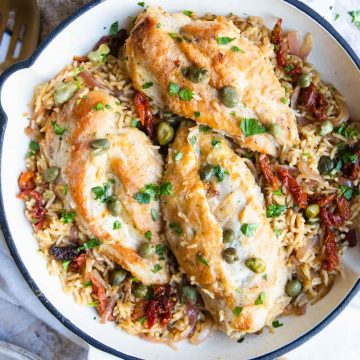
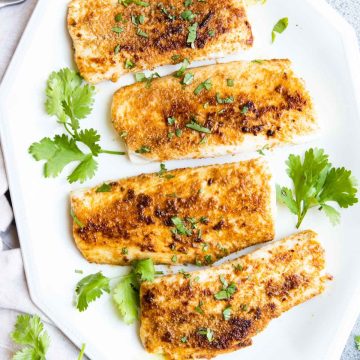
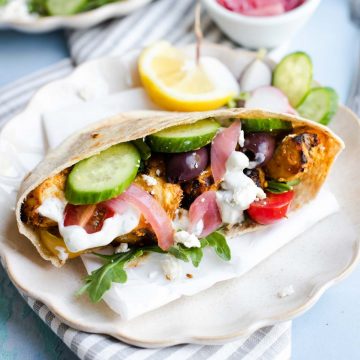
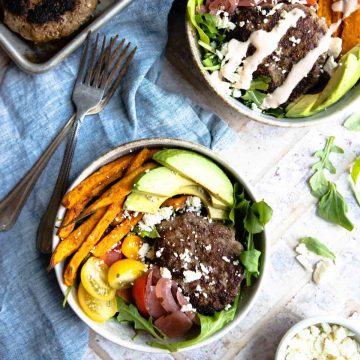
Leave a Comment